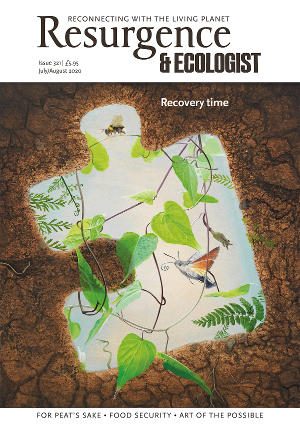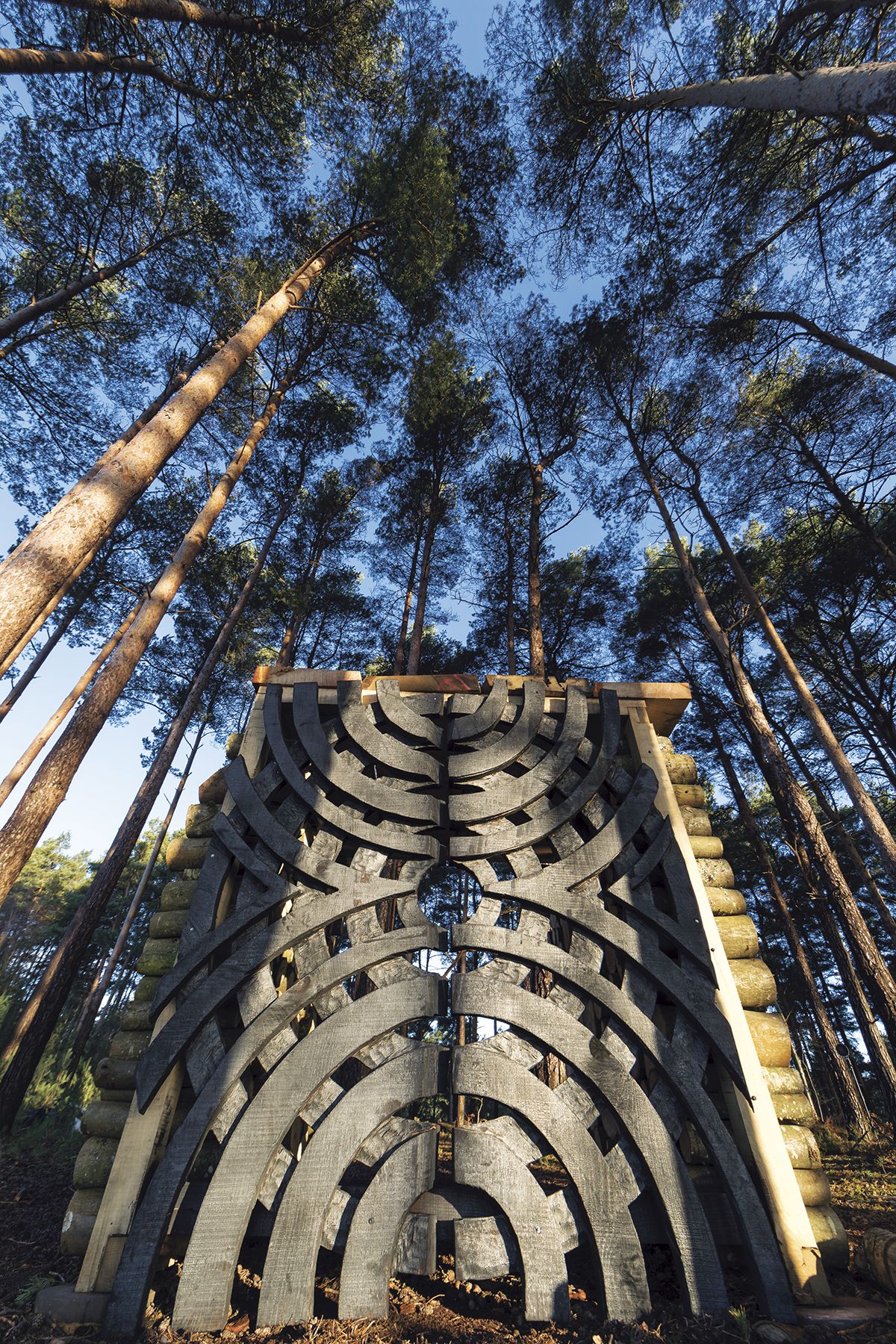For the latest stage in his 40-year-plus journey of beguiling creativity and international recognition, Walter Bailey is currently undertaking a commission for Kewʼs wild botanic garden at Wakehurst. Based in rural Sussex, one of the most wooded counties of lowland Britain, Bailey creates his artworks from locally sourced native woods, in a significant connection between artist and environment. His sculptures not only echo the harmony and tensions of the natural landscape, but also ultimately focus on the essence of life itself.
Bailey was born far from the gentle beauty of the south coast, in the industrial city of Sunderland. Here his youthful scanning of local beaches for objects of interest forged a lifelong fascination with natural processes and elemental interactions. Spending his summers at sea as a cabin boy with his North Sea fisherman father increased his awareness of ecosystems and species extinction. All, in turn, would influence his creative route and embed a commitment to live and work mindfully in the natural world.
Leaving a family life often as turbulent as the North Sea swells, Bailey eventually settled amongst the serenity of the undulating South Downs. He felt an immediate affinity with the area’s rich ecology, so it was here that he created a shared home and working space with his partner, juggling creative employment and his growing family responsibilities.
“In the words of Wendell Berry,” he told Resurgence & Ecologist, “my home has always been a household, the dynamic centre of my life – never a mere residence. When my children were growing up, the household was a place where family life, cultural life and working life were interwoven: growing vegetables, making music, home schooling. My roots grew deeper as my family grew.”
Despite the fledging of his children, having a home with a studio close by still enables Bailey’s daily life to ebb and flow like the tides, between artistic labour and domesticity. Although he has worked as far afield as Japan and the USA, his days in the UK are often spent in solitary contemplation in the studio or absorbing the beauty of his rural locality. Such activities often culminate in the intensity of working on sculptural projects for a deadline, tempered only by the rituals of the everyday.
Bailey’s choice of settlement was partly inspired by a plentiful supply of timber such as oak and English redwood from regenerative forestry. He describes a respectful relationship with his favoured material:
“It is always an honour to work with a fallen tree. Carving a tree’s wood into new forms is a negotiation… The convolutions of a flowing grain cannot always be read, however many years of experience you have. The physicality and flow of carving is a dance of persuasion and submission, elation and despair. Then somewhere in that synergy an artwork arrives.”
Viewing the entire life cycle of his creations as an imperative ecological responsibility, from the sourcing of materials and processes of production to the final form and beyond, is fundamental to Bailey’s practice. Even the tools he utilises are subject to questions of sustainability. The artworks, he explains, are likewise contemplated for their impact on the world.
“All my sculptures are carved from untreated green wood and can be returned to the Earth at the end of their useful life. My work belongs to a living Earth and returns to nourish the living Earth. This in turn will create room for new voices to speak in form.”
Bailey’s hands-on production methods, such as carving or burning, acknowledge a relationship to craftsmanship and the handmade. His decision to sculpt was initially sparked when he was training as a forester in his twenties, to fund his then painting practice. This was an era in which Dutch elm disease was rampant, providing Bailey with the materials to develop his skills.
“Making sculpture from the timber of a tree quickened my heart; it was a homecoming, a participatory creative way of life I had longed for.”
Known for sculptures encompassing lattice and bold carvings, suggesting natural geometry and cellular systems, Bailey describes his work as a dialogue between his inner and outer landscape. However, although the sculptural forms aim to embody a reminder of our connection to the planet, he does not see himself as particularly part of an artistic or political movement.
“Iʼve never felt that I fitted into an established paradigm. At the beginning of my career I was influenced by land art but found the dissonance between my inner landscape and the formal expectations of the movement alienating.”
His artistic influences have mostly been female creators such as Louise Bourgeois and Ana Mendieta. While the latter, with her exploration of the body in conjunction with the natural processes of environment, communicated comparable areas of meaning, the former shared Bailey’s view of drawing as an act of survival.
As an artist from a working-class family, Bailey is committed to creating accessible work for the public realm, both nationally and internationally. His impressive ‘Tupelo Cloud’ sculpture (2013) has recently been donated, via a private collector, to the Center for Environment and Society at Washington College, Maryland, and will be sited on the shores of Chesapeake Bay. Made with local tupelo and locust wood, the work was created in response to global warming as a physical platform for the solitary observation of Nature.
Meanwhile, Bailey’s present project of a latticework, ‘Fire Seedʼ, for the newly planted North American Prairie landscape at Kew’s Wakehurst site, honours ancient knowledge of working in harmony with the landscape. This is of course appropriately reflected in the approach of the sculptor.
On the role of artist in these troubled times, Bailey says: “The best of art is often triggered by trauma. Creative individuals and communities help to rebuild the world and how we understand it on a daily basis. Whatever we contribute, however small, we may create ripples of change or help to trigger a paradigm shift.”
Walter Bailey’s enchanting sculptures, in addition to his considered and holistic practice within Nature, are indeed indicative of hope and positive possibilities for all.
“Human beings have been caretakers of life’s diversity and can be again,” he asserts.







